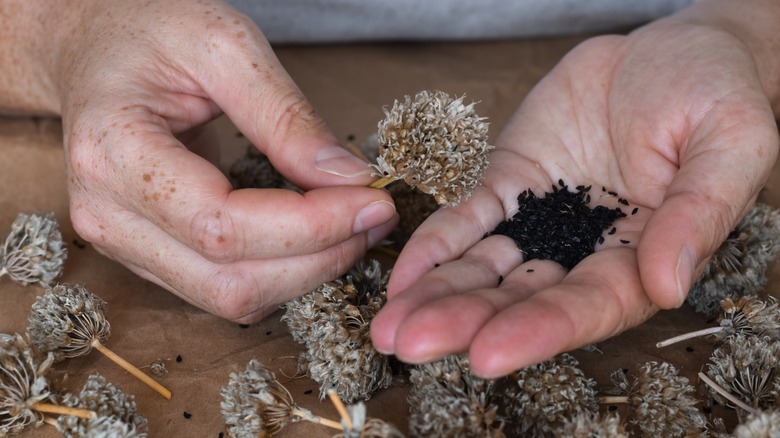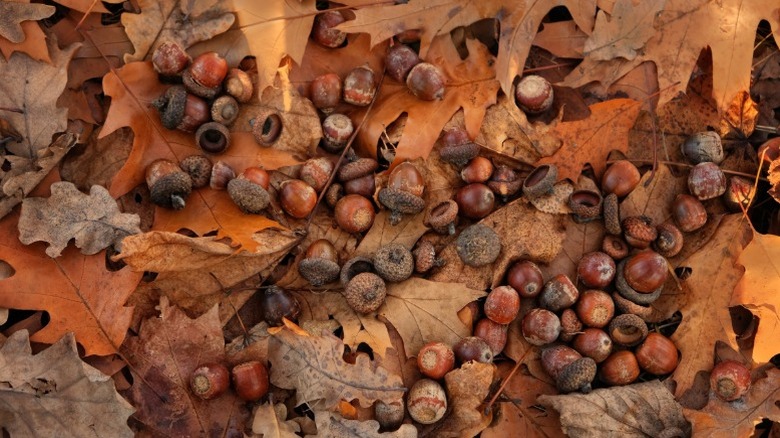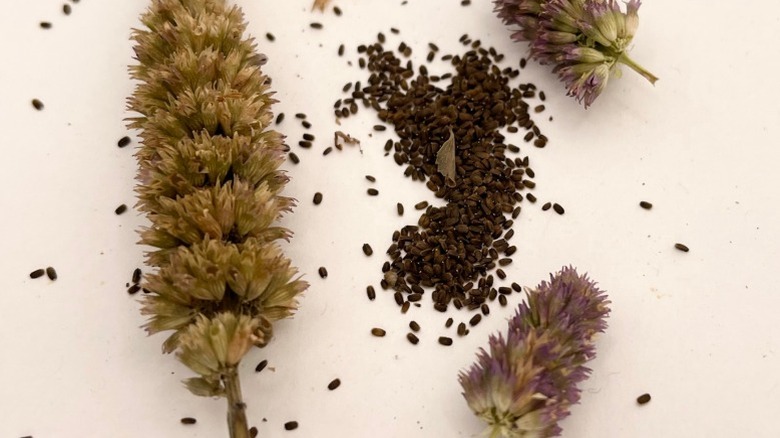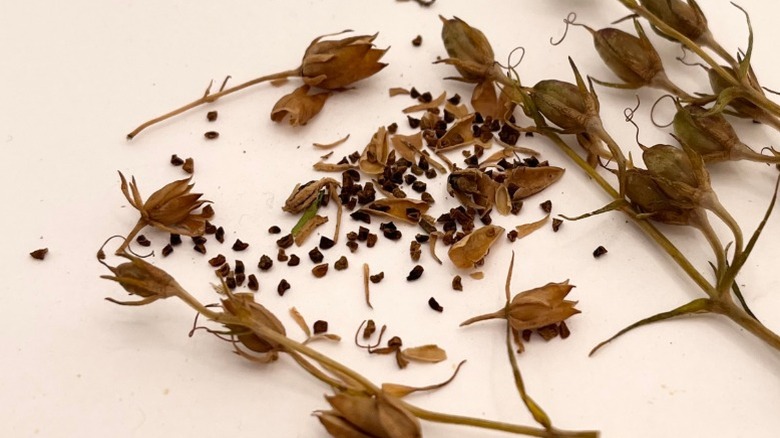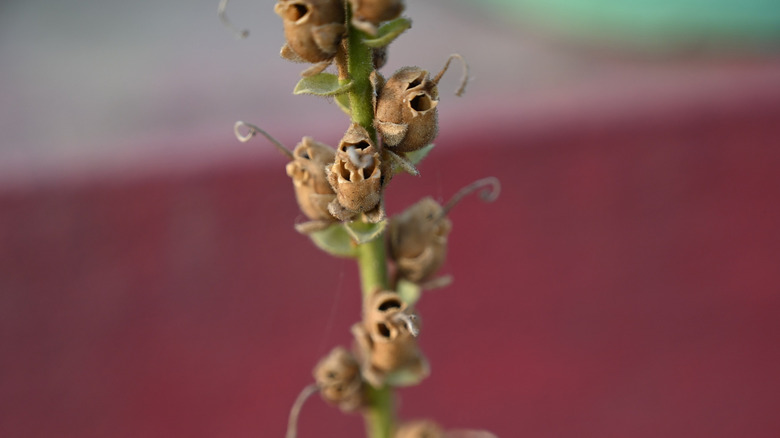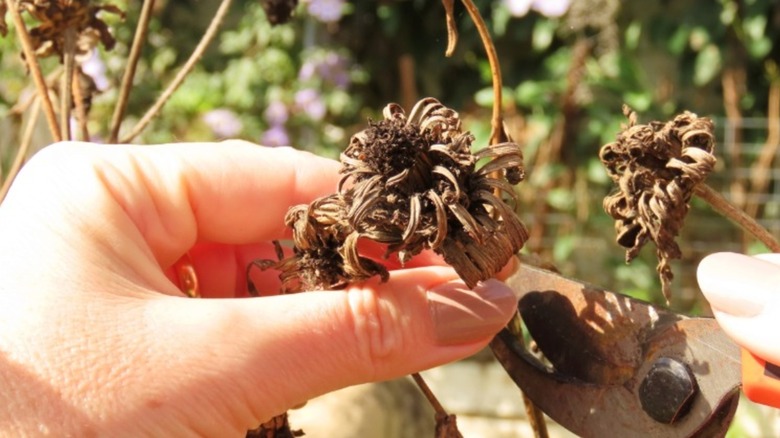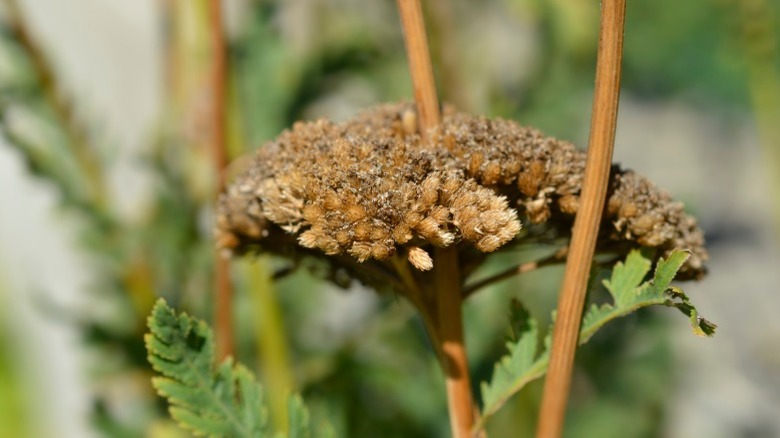10 Seeds You Can Harvest In Fall For Free Plants In The Spring
When it comes to gardening, many plants are gifts that keep on giving, even after the growing season has come to an end. There are plenty of seeds you can harvest from your garden and replant to enjoy free plants next season. Harvesting seeds from your flowers or trees is not terribly difficult if you know what to look for with different species. Collecting seeds from your plants in the fall lets you grow even more once spring returns.
Some gardeners choose to harvest seeds from native plants like milkweed and yarrow to help local pollinators and wildlife thrive. Other gardeners hope to expand their garden plots without spending a lot on seeds or seedlings at the nursery. Whatever your reason for collecting seeds in the autumn, remember to do it responsibly. If you plan on going off your property, always ask permission and check regulations before harvesting. Be prepared with the right tools, including brown paper bags and clean shears.
Northern red oak
A majestic oak species, the northern red oak (Quercus rubra) is a North American native characterized by lovely foliage that adds a little height and shade to landscapes. These trees grow from acorns, which typically ripen from mid-September to mid-October. Check for a reddish-brown color. Do not harvest anything that looks damaged, especially by insects. Save your acorns until the spring, when you can plant them after proper stratification. For red oaks, that includes at least three months of cold exposure to break dormancy. Hardy in zones 4 through 8.
Sweet pea pods and seeds
Sweet peas (Lathyrus odoratus) come in a variety of colors and heights, making them a well-rounded garden plant. They also double as a flowering ground cover you can grow for healthy soil. You can easily save their seeds after the growing season is over. Wait until fall when the seed pods start to become brown and brittle to the touch. Take off the entire pod, put it in a paper bag, and remove the individual seeds carefully. Once spring arrives, sow the seeds for another round of beautiful sweet peas.
Calendula seeds
Calendulas (Calendula officinalis), or pot marigolds, have many uses in the kitchen and add a little bright spot to a garden. As an annual flower, you can save your calendula seeds each fall to renew your flower beds in the spring. Wait until the seeds ripen from August to November before harvesting. Calendulas also self-seed, so make sure not to wait too long for the seed heads to dry before collecting them. Wait until early spring before sowing your saved seeds outside. They are hardy in zones 2 through 11.
Anise hyssop seeds
Grow anise hyssop (Agastache foeniculum) if you love licorice-scented blooms, enjoy attracting butterflies, or simply want to admire these elegant, stately flowers. Harvest the seeds in late autumn, once the flowers fade, to grow even more of this hardy perennial. The flower spikes can be left alone to dry and then removed completely. Placing them in a paper bag can help you collect the tiny seeds more easily. They are hardy in zones 4 through 8.
Milkweed seed pods
Milkweed (Asclepias spp.) is one of those vital native plants that provide important support to many species. Growing more milkweed helps sustain native species and strengthens local ecosystems. Collect milkweed seeds every autumn by scouting for the green, canoe-shaped pods that grow along the stalks. Check for the green pods to turn yellow before harvesting. They also should start splitting open, but not too much. You can pick the entire pod and separate the seeds later. Either plant them directly in the garden or store them in a dry, cool place until spring. Hardy in zones 3 through 8.
Hackberry tree berries
A berry-filled tree that is native to the U.S., the hackberry (Celtis occidentalis) adds shade to yards and provides food for wildlife. Each year, you can collect its berries to start growing new trees. Between October and December, the dark-colored berries of the hackberry tree are ready for collection. Some of the best ways to harvest the berries are to handpick them from the tree or rake them off the ground once they have fallen. Germination requires two to three months of cold stratification before sowing in the spring. They are hardy in zones 3 through 9.
Penstemon seeds
Penstemon (Penstemon spp.), sometimes called bearded tongue for its tubular petals, includes hundreds of different species. This purple perennial attracts pollinators, thrives in heat, and is easy to grow from seed. In the fall, you can start collecting the tiny brown seeds to sow elsewhere in your garden. Look out for the seed pods, which turn brown and brittle when they are ready for harvesting. In the spring, you may need to apply different strategies for germination depending on the species. Many species respond well to cold stratification methods, either artificially or naturally. Hardy in zones 5 through 8.
Snapdragon seeds
A popular flower for the garden, snapdragons (Antirrhinum majus) are often grown as annuals due to their delicate nature. They are only hardy in zones 7 through 10. Collect seeds from these flowers in autumn to grow them again the following spring. In the fall, wait for the plants to start to turn brown, then you just need to shake the pods to collect the seeds. Be aware that snapdragons easily self-sow, so time your harvesting right for the best results. Save the seeds until the timing is right for sowing in spring.
Zinnia seeds
A North American native and member of the daisy family, zinnias (Zinnia spp.) bring bright, welcome color to any garden. Plus, growing them is ideal for attracting good pollinators. Zinnias are pretty easy to collect seeds from if you make sure not to wait too long. Birds also enjoy the seeds, so collect them before wildlife does. Once the flower heads have dried, remove and gently break them apart to reach the seeds inside. In spring, direct sow the seeds once soil temperatures rise enough for germination. Hardy in zones 3 through 10.
Yarrow seeds
Growing yarrow (Achillea millefolium) can be rewarding, especially when it is easy to collect seeds in fall. You may even decide to grow more yarrow varieties to add stunning color to your gardens. Harvest by early autumn, once the flower heads have dried. Crush the dried flower heads gently to release the tiny silver seeds. If the flower heads are ready, you can harvest them whole and allow them to finish drying before crushing. To store ahead of late April planting, keep the dried seeds in a cool, sealed container to avoid premature germination. Hardy in zones 3 through 9.
